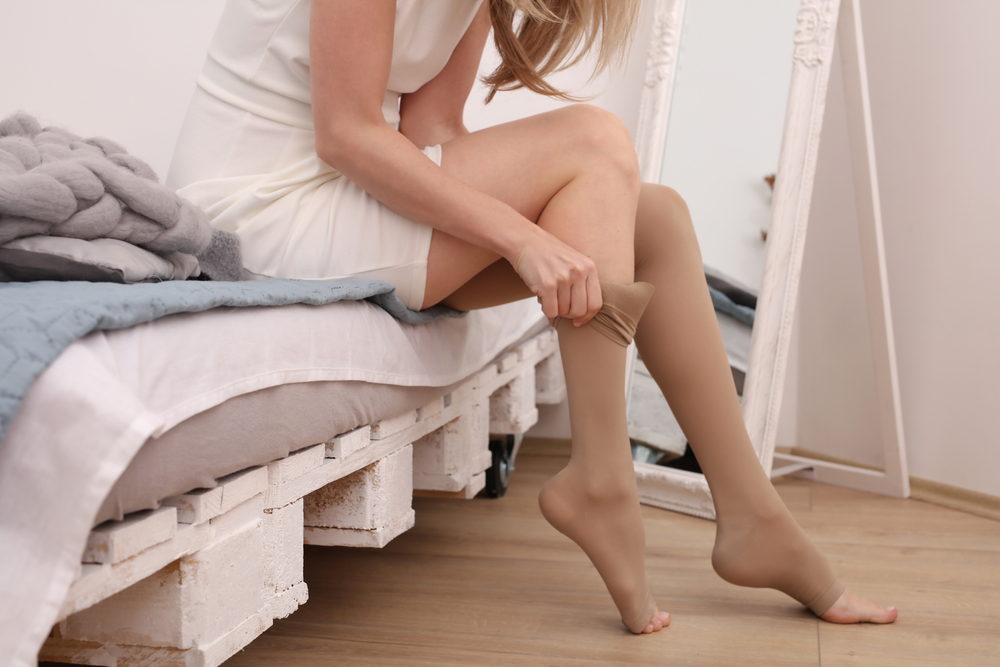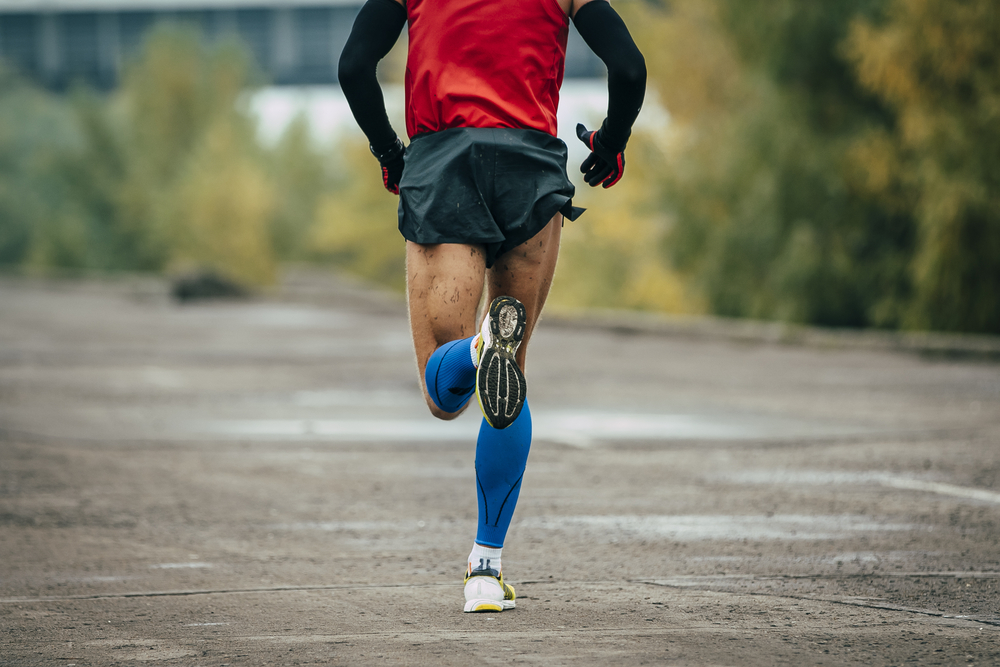Consider compression stockings if you are struggling with cases of venous disease and seeking a dependable treatment option.
In this blog, we’ll dive into everything you need to know about compression stockings and why they could help you take charge of your health.
What are Compression Stockings?
Compression Stockings are specialized socks designed to provide health benefits relevant to venous disease treatment for different conditions.
These socks will fit snugly to your legs and ankles, applying enough pressure to reduce inflammation and extra fluids and improve blood flow from your legs to your heart.
You may be wondering, are compression stockings right for me?
Below, we’ll answer a few common questions about compression stockings.
Compression Stockings will be a good fit for you in many cases.
Your doctor can recommend and even prescribe compression stockings for potential venous issues such as:
- Deep vein thrombosis (DVT)
- Blood clots
- Venous hypertension and ulcers
- Varicose and spider veins
- Lymphoedema
Once your doctor lets you know about how compression stockings can benefit you, they should also recommend a specific type of compression stocking that matches your needs.
Below, we’ll look into a few common types of compression stockings worth mentioning.

Types of Compression Stockings
Graduated Compression Stockings
Graduated compression stockings are a type of sock with compression strongest at the ankle and gradually decreasing as it moves up the legs.
Your doctor recommends this stocking if you have peripheral edema or orthostatic hypotension, which will help push blood back toward your heart.
Anti-embolism Stockings
Anti-embolism stockings are another type of compression stocking similar to graduated compression stockings in the location they apply pressure, but they serve a different purpose.
These stockings typically apply higher levels of compression than other socks and are designed to be worn if sitting for long periods or in bed.
Your care provider often recommends these if you have recently had surgery or are recovering from illness due to higher risks of developing blood clots.
Non-Medical Support Hosiery
Non-medical support hosiery stockings are a sock designed to support tired legs.
Unlike graduated and anti-embolism stockings, these are not designed to reduce the risk of blood clots. However, these stockings still provide health benefits!
When comparing compression levels, you’ll notice that these offer lower levels.
You can also wear these stockings for an extended period, as these are recommended for those who spend a lot of time on their feet.
One primary reason for these stockings is to help prevent varicose and spider veins. Blood can pool in your veins, causing them to become enlarged.
Support hosiery can reduce your risk of developing these veins, as it will help improve your circulation and prevent blood from pooling.
If you spend the day on your feet or are just seeing a way to improve the health and look of your legs, non-medical support hosiery may be the right choice for you.
Which Type of Compression Stocking Should I Choose?
Now that you know a few of the main types of compression stockings, which ones should you choose?
First, you will want to find something that fits you and is comfortable. Consider a prescription-grade stocking if you find a pair that isn’t working for you.
Your doctor will be able to help you in finding the right fit and pressure.
Tips For Compression Stocking Use
Where Can I Buy Compression Stockings?
If you’re looking to buy compression stockings, we’ll outline a few things to remember to find the product that fits your needs.
First, you’ll want to know the level of compression you need. The level of compression needed will depend on the reason you need the stockings and your overall health.
If unsure, it’s best to contact your doctor to discuss the best compression level.
Once you have determined the amount of compression needed, you can begin hunting for retailers who offer quality compression stockings. Some popular options include online retailers and pharmacies.
The key here is to find a safe, comfortable product that fits your needs. With suitable stockings, you can reap the many benefits discussed above.

How Many Hours A Day Should I Wear Compression Stockings?
Now that you have your compression stockings, you may wonder how often you should wear them.
Everyone wearing compression stockings has varying needs, so the daily recommended use for these socks will also vary.
It is widely recommended to wear them according to your healthcare provider’s preferences, but wearing compression stockings during the day and taking them off at night is typical.
Your care provider will be able to give you specific directions as to how often and how long to wear your compression socks.
Compression Socks And Physical Activity
Compression wear is versatile and can also be beneficial for athletes during physical activity.
Compression socks have a straightforward use for medical purposes, but athletes and runners can benefit from improved blood flow and reduced muscle soreness after a strenuous lift or run.
Generally, healthy individuals without a medical condition do not require compression stockings.
However, If you are considering using your compression socks during physical activities, it’s best to consult with your provider.
Consider compression socks if you experience swelling and extended recovery times after workouts.
What’s The Easiest Way To Put On Compression Socks?
Now that you have a base understanding of all things compression socks, let’s get into a few tips on how you can quickly put on your compression socks.
Putting on compression socks can be tricky, but simple steps can make the process much easier.
Align your heel and slip your foot into the sock. Then, slowly pull the top of your sock up your leg.
From here, you must smooth any spots that look bunched or wrinkled. It takes some practice, but you’ll have it down quickly.
How to Care for Your Compression Stockings
To ensure your compression stockings hold up, knowing a few easy ways to care for your compression stockings is essential.
Following these simple steps, you can ensure continued support, relief, and longevity in your compression stockings.
Handle with care: Avoid excessive pulling or stretching! Too much pulling and stretching can cause reduced compression due to damaged fibers in the material.
Wash them regularly: It is generally best to wash them with mild soaps and lukewarm water. Check your specific product for washing instructions.
Downsides Of Compression Stockings
In general, compression stocking use is a safe way to promote the health of your legs. You can easily find the right fit with various types and compressions.
However, we’ll discuss a few things to be wary of when wearing compression socks.
Circulation Concerns
When wearing your compression stockings, ensure to follow the guidance of your healthcare provider.
Compression stockings can prevent blood circulation in your legs if not fitted properly.
Awareness
Side effects from compression sock use happen when you’re not wearing them correctly.
While manufacturers may report safe all-day and night use, your needs will depend on your reason for wearing your compression socks!
Ensure you are aware of your use. As mentioned, talk with your care provider about how often you should wear your compression socks and how they should be fitted!
Final Thoughts
If you have any questions or concerns or wonder if compression stockings suit you, start a conversation with your primary care provider.
Your provider can give the necessary information or refer you to a recommended vascular specialist for treatment services.
Compression stockings can be a valuable tool for venous disease treatment, or for those seeking to promote healthy blood flow circulation in their legs.
Compression stockings can be a practical addition to your lifestyle with the proper guidance.
At Michigan Vascular, we exist to improve the quality of life for patients through our vascular care services.
Simply fill out our form or call us at (810) 732-1620 for any questions or if you would like to schedule an appointment.

